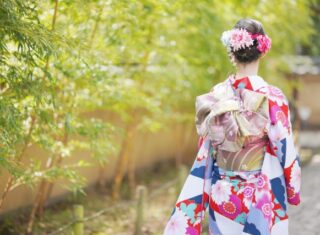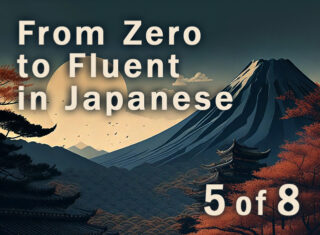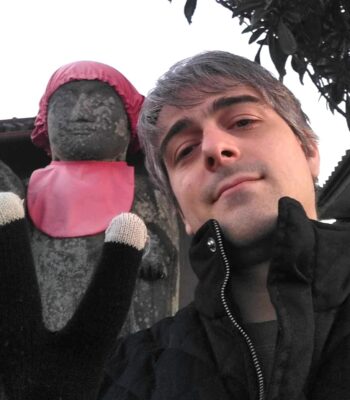- Learning Japanese
14 Historic Landmarks to Visit During Your Trip to Japan
2025.04.12
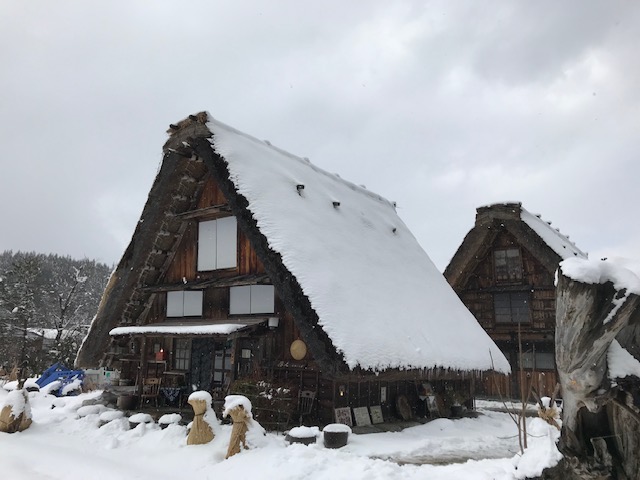
Are you studying Japanese and wondering, “What famous historical sites should I visit when I travel to Japan?”
Japan is home to many historic landmarks, some with over 1,000 years of history. These places offer a unique opportunity to experience Japanese history through beautiful scenery and architecture.
In this article, we’ll introduce 14 must-visit historical landmarks to check out on your trip to Japan—use this as a helpful reference when planning your travels!
14 Must-Visit Historical Sites in Japan
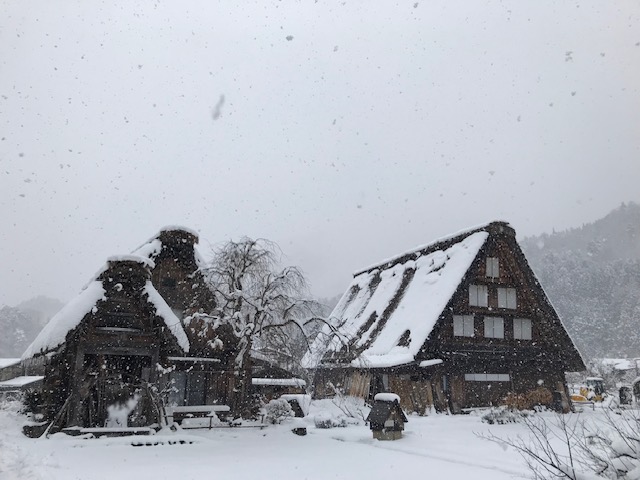
Here are the 14 historical landmarks we recommend visiting while traveling in Japan:
- Shirakawa-go
- Hiroshima Peace Memorial Park
- Itsukushima Shrine
- The Three Mountains of Dewa (Dewa Sanzan)
- Ise Grand Shrine
- Sacred Sites and Pilgrimage Routes in the Kii Mountain Range
- Himeji Castle
- Nara area
- Kyoto area
- Iwami Ginzan Silver Mine
- Mozu-Furuichi Kofun Group
- Shrines and Temples of Nikko
- Tomioka Silk Mill
- Hiraizumi
Below, we’ll explain more about each of these sites.
Shirakawa-go (Gifu Prefecture)
World Heritage Site / Traditional Japanese thatched-roof village
Located in the northwestern part of Gifu Prefecture, Shirakawa-go is a village known for its unique gassho-zukuri (prayer-hands style) homes, adapted for the heavy snowfall in the region. It was registered as a UNESCO World Cultural Heritage Site in 1995.
The gassho-zukuri style features steeply angled thatched roofs designed so that snow slides off naturally. Over 100 of these homes remain today, including some built as early as 1827, and many are still inhabited—making it a precious living cultural heritage.
The village’s harmony with the changing seasons adds to its charm: cherry blossoms in spring, lush greenery in summer, colorful foliage in autumn, and snow-covered landscapes in winter. The winter illumination events are especially magical, with the snow-dusted homes glowing softly in the night.
I once took a group of my Japanese language students there, and it was unforgettable. For many of them, it was their first time in Japan, and I still remember the look of wonder on their faces as they gazed at the gasshō-zukuri houses and the breathtaking scenery. It was one of those truly special moments as a teacher. I’d love nothing more than to bring my students there again someday and share that magical experience all over again.
Hiroshima Peace Memorial Park (Hiroshima Prefecture)
World Heritage Site / A park dedicated to conveying the horror of nuclear weapons and the importance of peace
Located in central Hiroshima City, Peace Memorial Park was built to honor the wish for lasting world peace. The park includes the Atomic Bomb Dome (a UNESCO World Heritage Site), the Peace Memorial Museum, and other monuments that preserve the memory of the atomic bomb dropped on Hiroshima.
The Atomic Bomb Dome is a preserved part of the former Hiroshima Prefectural Industrial Promotion Hall, located near the hypocenter of the explosion on August 6, 1945. Miraculously, parts of the building’s structure remained standing and it now serves as a symbol of the tragedy of war.
Inside the Peace Memorial Museum, visitors can view photographs, personal belongings of victims, and remnants of buildings distorted by the bomb’s heat and blast. It is a deeply moving place that prompts reflection on war and peace.
I had the opportunity to visit this deeply meaningful place with my students, and it was an experience none of us will ever forget. While we were there, we had the incredibly rare chance to hear directly from a woman who had actually survived the atomic bombing. She shared her story with such honesty and courage—we learned about the severe burns people in Hiroshima had endured and saw historical records showing what Hiroshima looked like at the time.
For my students—many of whom had never encountered this part of Japan’s history in such depth—it was a powerful and emotional learning experience. Especially for those coming from Western countries, where this history isn’t often taught in detail, I believe it was a truly valuable opportunity to reflect, learn, and understand Japan on a much deeper level.
Itsukushima Shrine (Hiroshima Prefecture)
World Heritage Site / A mystical torii gate floating on the sea
Located on Miyajima Island in Hiroshima Prefecture, Itsukushima Shrine has a history of over 1,400 years and is also known as one of Japan’s Three Most Scenic Views (Nihon Sankei).
The shrine’s most iconic feature is its giant torii gate, which appears to float on the sea during high tide and can be approached on foot at low tide. The current torii was rebuilt during the Edo period, and its traditional construction techniques are still preserved today.
The shrine also hosts traditional festivals such as the Kangen-sai and Tōkasan, providing opportunities to experience Japan’s cultural heritage firsthand. At night, the shrine and torii are illuminated, creating a dreamlike, mystical atmosphere unlike anything seen during the day.
★Also try reading:
Deepen Your Understanding of Japanese Culture and Traditions! A Detailed Guide to 12 Iconic Traditions
The Three Mountains of Dewa (Yamagata Prefecture)
Sacred site of Shugendō / A spiritual journey of rebirth
The Three Mountains of Dewa (Dewa Sanzan) refer to three sacred mountains in Yamagata Prefecture: Mount Haguro, Mount Gassan, and Mount Yudono. These mountains have been objects of worship for over 1,400 years.
- Mount Haguro (Haguro-san) → Symbolizes the present
- Mount Gassan (Gassan) → Symbolizes the past
- Mount Yudono (Yudono-san) → Symbolizes the future
Visiting all three mountains is said to be a “journey of rebirth,” and the area is well known as a training ground for the mountain-based faith of Shugendō. Mount Haguro features one of Japan’s oldest five-story pagodas and a pilgrimage path lined with cedar trees and 2,446 stone steps, offering a deeply historical atmosphere.
At Mount Yudono, a mysterious ritual awaits, which can only be experienced by those who visit. As the saying goes, “Do not speak, do not ask”—the experience is meant to remain sacred and personal.
Ise Grand Shrine (Mie Prefecture)
Japan’s holiest shrine / A sacred place with 2,000 years of history
Ise Grand Shrine (Ise Jingū) is regarded as the most sacred shrine in Japan and is often referred to as the spiritual home of the Japanese people.
With a history of over 2,000 years, Ise Jingū consists of two main shrines: the Inner Shrine (Naikū), dedicated to Amaterasu-Ōmikami, and the Outer Shrine (Gekū), dedicated to Toyouke-Ōmikami, the deity of food, clothing, and shelter. In total, there are 125 affiliated shrines throughout the area.
The most distinctive feature of Ise Jingū is the Shikinen Sengū, a ritual in which the shrine buildings are completely rebuilt every 20 years. This tradition ensures the continued sanctity of the shrine and the transmission of architectural craftsmanship across generations.
After your visit, be sure to stop by Okage Yokocho, where you can enjoy local specialties like Akafuku mochi and Ise udon.
Sacred Sites and Pilgrimage Routes in the Kii Mountain Range (Wakayama, Nara, and Mie Prefectures)
World Heritage Site / One of Japan’s premier sacred sites and pilgrimage networks
The Sacred Sites and Pilgrimage Routes in the Kii Mountain Range encompass three main sacred areas—Kumano Sanzan, Mount Kōya, and Yoshino and Ōmine—as well as the historic pilgrimage trails connecting them. This cultural landscape was registered as a UNESCO World Heritage Site in 2004.
- Kumano Sanzan → Refers to the three grand shrines of Kumano Hongū Taisha, Kumano Hayatama Taisha, and Kumano Nachi Taisha—a holy destination for the ancient pilgrimage known as Kumano mōde
- Mount Kōya → Founded by Kūkai (Kōbō Daishi), the founder of the Shingon school of Buddhism. The Okunoin mausoleum is believed to be where Kūkai remains in eternal meditation
- Yoshino and Ōmine → A sacred site established by En no Ozunu, the founder of Shugendō. Known for its challenging mountain ascetic practices
The pilgrimage routes (sankei-michi) connect these sites and stretch over 350 kilometers. Among them, the Kumano Kodō is especially famous for its beautiful cedar-lined paths and stone walkways, offering visitors a deep sense of history.
This destination is perfect for those who wish to immerse themselves in Japan’s historical natural and spiritual heritage.
Himeji Castle (Hyōgo Prefecture)
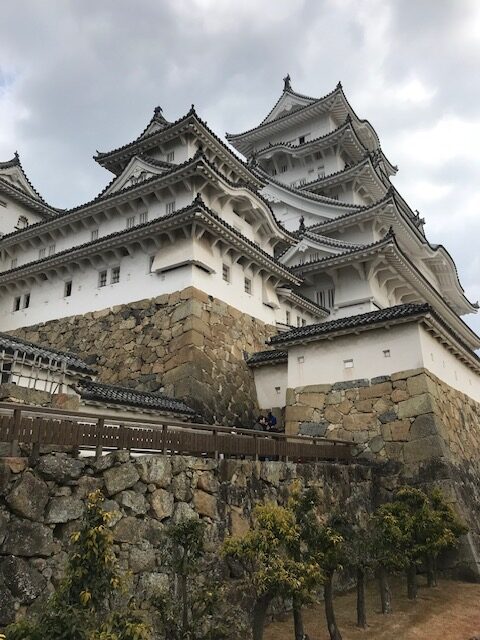
World Heritage Site / Japan’s renowned white castle
Located in Himeji City, Hyōgo Prefecture, Himeji Castle is affectionately known as Shirasagi-jō (“White Heron Castle”) and was designated a UNESCO World Cultural Heritage Site in 1993. It is considered the most beautiful of Japan’s existing castle structures and is a valuable cultural asset preserving the form of a castle from the Sengoku and Edo periods.
Himeji Castle is known for its elegant white plaster-coated main keep and its ingenious defensive design. Inside the castle grounds, you’ll find highlights like Hishi-no-mon Gate, the Nishi-no-maru Long Corridor, and maze-like passageways built to hinder enemy movement. Surrounding the castle is Kōko-en, a beautiful Japanese garden where you can enjoy the scenery in every season.
★Also try reading:
What Makes Japanese Castles So Fascinating? An Introduction to Highlights for Castle-Hopping While Traveling in Japan and the Differences from Western Castles
Nara Area (Nara Prefecture)
A treasure trove of World Heritage Sites / Japan’s ancient capital and historic hub
Nara once served as Japan’s capital and remains rich in historical landmarks, including numerous shrines and temples registered as World Heritage Sites.
- Tōdaiji → Home to the Great Buddha Hall, the world’s largest wooden structure, housing the 15-meter-tall Great Buddha of Nara
- Kōfukuji → Headquarters of the Hossō sect of Buddhism, known for its five-story pagoda and the famous Ashura statue
- Hōryūji → Built in 607 by Prince Shōtoku, it is the world’s oldest surviving wooden structure
- Kasuga Taisha → A mystical shrine with around 3,000 stone and bronze lanterns
- Ōmiwa Shrine → One of Japan’s oldest shrines, where the sacred object of worship is Mount Miwa itself
- Kinpusenji → A Shugendō sacred site in Yoshino, with the massive Zao-dō Hall, a National Treasure
Other highlights include Nara Park, where visitors can interact with friendly deer, the Ishibutai Kofun, one of Japan’s largest horizontal stone burial chambers, and the Nara National Museum, home to a wealth of Buddhist art.
Kyoto Area (Kyoto Prefecture)
The ancient capital where World Heritage Sites and traditional culture are alive
Like Nara, Kyoto was once the capital of Japan and is renowned for its historical significance. It boasts over 300 nationally designated Important Cultural Properties.
- Kiyomizudera → Famous for its large wooden stage overlooking cherry blossoms and autumn foliage
- Fushimi Inari Taisha → Home to the breathtaking Senbon Torii, a tunnel of 10,000 vermilion torii gates
- Kinkakuji (Golden Pavilion) → A beautiful temple covered in gold leaf, especially striking against a snowy backdrop
- Ginkakuji (Silver Pavilion) → Built by the 8th Ashikaga shogun, Ashikaga Yoshimasa, later converted into a Zen temple
- Tenryūji → A World Heritage Site Zen temple, known for its stunning Cloud Dragon ceiling painting
Simply walking through the streets of Kyoto offers a palpable sense of history and tradition.
Iwami Ginzan (Shimane Prefecture)
World Heritage Site / Historic silver mine that supported Japan’s silver industry
Iwami Ginzan is one of Japan’s largest former silver mines, located in Ōda City, Shimane Prefecture. It was registered as a UNESCO World Cultural Heritage Site in 2007. From the 16th to 19th centuries, it is said to have produced about one-third of the world’s silver supply, making it a site of major historical importance.
What sets Iwami Ginzan apart is its environmentally conscious mining practices. Despite the need for significant deforestation in those times, mining was conducted in ways that preserved the surrounding natural landscape—earning praise as an example of sustainable resource management.
A key highlight is the Ryūgenji Mabu, a hand-dug mine shaft that visitors can walk through to get a sense of miners’ working conditions. The surrounding Ōmori district, which flourished alongside the mine, retains old townscapes and samurai residences, evoking the atmosphere of the Edo period.
This is a must-visit site not only for those interested in Japanese history but also for those wanting to learn more about traditional industrial heritage.
Mozu-Furuichi Kofun Group (Osaka Prefecture)
World Heritage Site / One of the world’s largest groups of keyhole-shaped burial mounds
The Mozu-Furuichi Kofun Group spans Sakai and Habikino cities in Osaka Prefecture. Registered as a UNESCO World Cultural Heritage Site in 2019, the area contains over 200 ancient burial mounds built between the late 4th and early 6th centuries, with 44 confirmed today.
The main highlight is the Nintoku-tennō-ryō Kofun, one of the largest keyhole-shaped tombs in the world.
- Total length: 486 meters
- Width: 305 meters
- Height: 35.8 meters
It is considered one of the three largest tombs in the world, along with the Great Pyramid of Giza and the Mausoleum of the First Qin Emperor. From above, its keyhole shape is clearly visible—an iconic feature of ancient Japanese burial practices.
The kofun is surrounded by triple moats, and inside lies a stone sarcophagus for the interred. Nearby are other large kofun, including the Richū-tennō-ryō Kofun and the Ōjin-tennō-ryō Kofun, making the area especially fascinating for archaeology enthusiasts.
Shrines and Temples of Nikko (Tochigi Prefecture)
World Heritage Site / Magnificent shrine and temple complex dedicated to Tokugawa Ieyasu
The Shrines and Temples of Nikko refer to a group of historical structures located in Nikko City, Tochigi Prefecture. These include Nikkō Tōshōgū, Rinnōji Temple, and Futarasan Shrine, along with their surrounding landscapes. The area was registered as a UNESCO World Cultural Heritage Site in 1999.
The most famous of these is Nikkō Tōshōgū, where Tokugawa Ieyasu—founder of the Tokugawa shogunate—is enshrined as a deity.
The shrine’s lavishly decorated buildings are considered masterpieces of Edo-period woodworking and craftsmanship:
- The carvings of the Three Wise Monkeys ("see no evil, speak no evil, hear no evil") and the Sleeping Cat are especially well-known
- The Yōmeimon Gate, with its intricate and extravagant ornamentation, is an overwhelming sight to behold
Rinnōji Temple, a Tendai-sect Buddhist temple founded in the Nara period, is also noteworthy. Inside its main hall, Sanbutsudō, three massive Buddhist statues are enshrined.
This stunning complex—harmoniously integrated with the surrounding natural environment—offers a unique opportunity to experience Japanese history, religious architecture, and spiritual tradition all in one place.
Tomioka Silk Mill (Gunma Prefecture)
World Heritage Site / A silk factory that supported Japan’s modernization
The Tomioka Silk Mill, established in 1872, was Japan’s first government-operated silk reeling factory. In 2014, it was registered as a UNESCO World Cultural Heritage Site as a historical facility that symbolizes Japan’s modernization and industrial revolution.
The mill was founded to improve both the quality and production volume of raw silk, which was one of Japan’s main exports at the time. Its buildings combine Western industrial techniques with Japanese traditional craftsmanship, a defining architectural feature.
- The Reeling Hall, about 140 meters in length, is one of the largest timber-framed brick buildings in Japan
- The site also includes storage facilities for dried cocoons and dormitories where female workers once lived
- Visitors can join guided tours to learn about the silk production process and industrial techniques of the time
I was incredibly moved when I watched the film Ah, Nomugi Tōge. It tells the powerful story of young girls working in silk mills like Tomioka Silk Mill, enduring harsh labor conditions while doing their best to support their families. Their strength, determination, and resilience really touched my heart—it gave me a deeper appreciation for the sacrifices made by so many during Japan’s path to modernization.
Learning about the lives of these young women, who left home to work in unfamiliar places and helped drive Japan’s modernization, offers a chance to reflect on the hardships and dedication of that era. Visiting Tomioka Silk Mill allows you to step back in time and imagine what life was like for these pioneering workers.
This site is invaluable for anyone interested in Japan’s industrial heritage, especially the way Western technology was adapted into Japan’s unique silk industry.
Hiraizumi (Iwate Prefecture)
World Heritage Site / A historic city embodying the Buddhist Pure Land ideal
Hiraizumi is a city established in the 12th century by the Northern Fujiwara clan, designed to express the Buddhist concept of the Pure Land (Jōdo). In 2011, it was registered as a UNESCO World Cultural Heritage Site.
Major historical sites in Hiraizumi include:
- Chūsonji Temple → Famous for the dazzling Konjikidō (Golden Hall)
- Mōtsūji Temple → Features a garden designed to represent the Pure Land paradise
- Kanjizaiō-in Ato → Ruins of a noble’s garden used for prayer
- Muryōkōin Ato → Ruins of a temple said to have been modeled after the Phoenix Hall of Byōdō-in
- Mount Kinkeisan → A sacred mountain symbolizing the power of the Northern Fujiwara clan
Mōtsūji Temple still retains a beautiful Heian-period garden, offering visitors a chance to experience tranquility and historical depth. Some of the temple’s structures survived despite the violent conflicts of the past. When Minamoto no Yoritomo attacked the Northern Fujiwara, much of the area was burned to the ground, but parts of Mōtsūji miraculously remained intact.
The Konjikidō (Golden Hall) at Chūsonji is especially breathtaking when seen in person. Oku Sensei himself remarked, “I’ve never seen anything so beautiful.”
Hiraizumi is a truly special place—one where you can feel the determination to build a peaceful Buddhist city, even in times of war.
★Also try reading:
19 Useful Japanese Phrases for Travel: Try Using Them in Different Situations!
Summary: Historic Sites to Visit During Your Trip to Japan
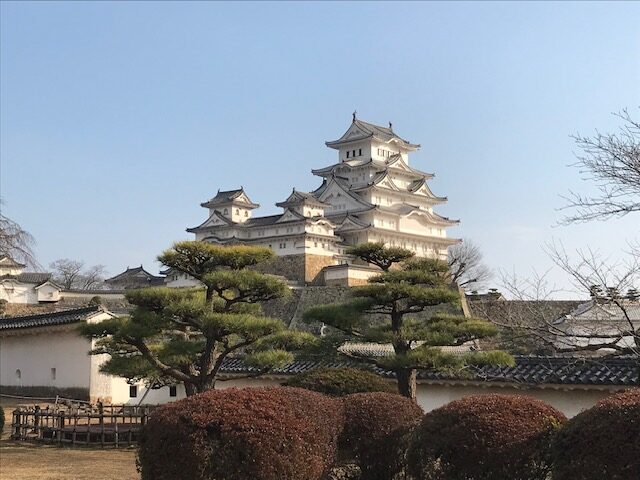
As I've introduced here, Japan is home to a wide variety of historical landmarks. If you're planning a trip to Japan, be sure to include some of these sites in your itinerary.
If you’re planning on visiting these places and think, “I’d love to communicate in Japanese while I’m there!”, we recommend trying online lessons at Oku Sensei's Japanese.
At Oku Sensei's Japanese, you can enjoyably and efficiently learn practical Japanese in a short period of time. You’ll also learn about Japanese culture, customs, society, and history—not just the language itself.
From beginner to advanced levels, comprehensive instruction is available, so learners of all levels can study with confidence. Why not enhance your travels by learning Japanese and experiencing the deeper charm of Japan?
Right now, Oku Sensei's Japanese is offering free 30-minute consultations, so be sure to check it out!



